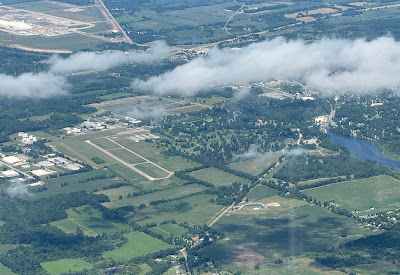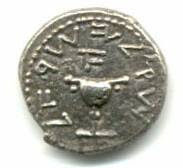Sunday was yet another great day for flying, no one had checked 914P out so I decided it needed some exercise. I decided to take a friend to Mt. Pleasant.
Got to the airport and the pre-flight went as expected.
Our neighbor beside our hangar had just taken his Cessna 170 out:
Very pretty aircraft.
I pulled the plane out as he left and the start up was nice and normal as was the run-up.
I had decided to go VFR and got flight following arranged and took off from Runway 27R heading to the northwest.
I initially got to climb to 5,550, poking through the blue in between a very scattered layer of clouds.
I overflew Flint airport, talking with Great Lakes Approach.
As I got closer to Mt. Pleasant, a more solid overcast layer started appearing, so I called Great Lakes Approach and let them know I needed to descend to avoid clouds. Since I was VFR, going into clouds was a no-no. They stated altitude was at my discretion and they appreciated my calling them before I started descending.
Soon, I arrived about 10 miles out at Mt. Pleasant with the runway in sight. Two other planes were in the pattern to land with a third stating they were maneuvering above the airport at 3,500 feet. Since I was at 3,500, I descended for separation and let everyone know I would overfly the airfield and do a midfield downwind entry for Runway 27. I would have used 9 as the winds were calm and it would have been convenient, but the two other aircraft had stated they were going to 27 so I joined in accordingly.
I did a nice overflight and then dropped into a midfield downwind entry, by which time one plane had landed, and the other plane was already on base and separation was good.
I did a really nice landing, parked, and headed into the terminal and called for a shuttle to the casino.
Had a nice lunch at Johnny Rockets, hit the craps table and got slaughtered.
That's why it's called gambling and not a sure thing. Still, it was an enjoyable experience, nice dealers and nice folks around the table and I learned some things. Didn't bet the rent, so no serious loss other than play money, and that I'll win back the next time, maybe.
Got the shuttle back to the airport, did the preflight and then took off from Runway 9 as winds were again calm and no traffic was about, and headed to the southeast back to Pontiac.
It was a pleasant flight back, with a few bumps from the heat of the day.
I got yet another nice view of Flint.
Nice to get a higher aerial view. I'm typically under the hood when flying at Flint and tend to just see the runway on final.
Great Lakes Approach at the end of their airspace decided not to hand me off to Detroit and instead had me squawk VFR and contact Pontiac Tower, which was fine.
I already had the ATIS for Pontiac and after contacting them was told to enter the right downwind for 27R and was #2 to land, behind another aircraft.
Said aircraft decided to fly a bomber-sized pattern, so Tower finally told them to turn base, I then extended my downwind for spacing and turned base outside of them, and then landed with a decent landing. I had too much speed so had to bleed some off - which I seem to do often with N914P, and I need to work on that. So I had a lot more float than I wanted. But, I still landed on 27R to complete the trip.
It was a very nice, if quite hot, day to fly.
That's 1.9 and 2 landings.






















